Hello!
We continue to recall what the flagships were in the recent past, and whether they can be used now.
The next step is the once sensational Galaxy S3, from the Korean manufacturer Samsung.

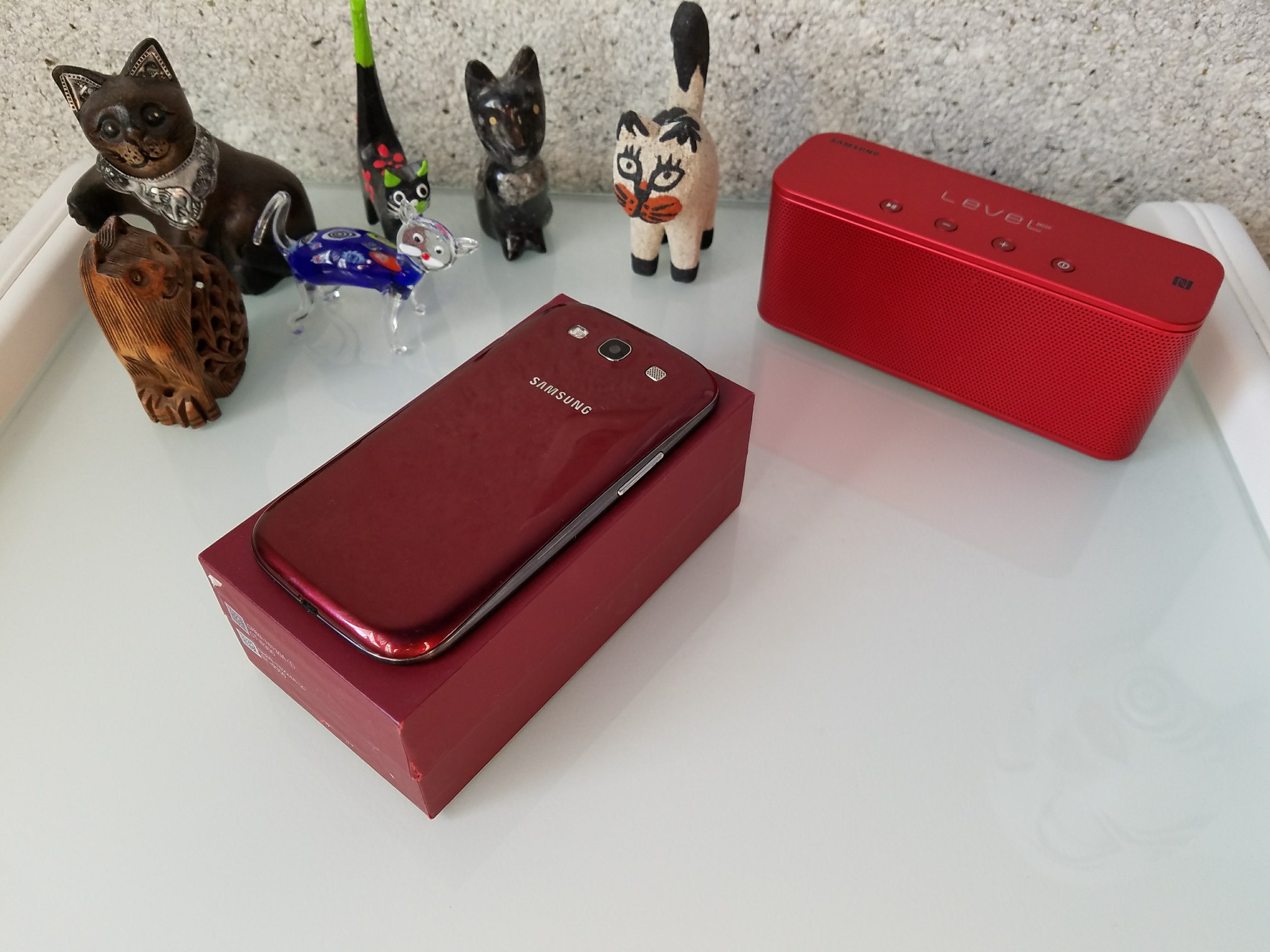
The device is truly a long-liver. Appearing in 2012, the Galaxy S3 has been released in several variations during its existence, and managed to set several records, including an impressive 30 million Galaxy S3 sold in its first 157 days of sales.
Galaxy S3 lineup and specifications
Of the main characteristics, it is worth highlighting the 4.8 ″ SuperAmoled HD display with the 'terrible' PenTile, which did not bother me at all during the use of the device.
The base model i9300 was released in a version with 1GB of RAM and a 4-core Exynos 4412 processor, which was quite enough for 2012. This is exactly what I have on my review today.
Different versions of this device were produced for different countries. For example, for the US market, these were operator models based on the less productive 2-core Snapdragon S4 processor, while equipped with 2GB of RAM (SCH-R530, SGH-i747, SGH-T999, SPH-L710).
Some time later, models with LTE support were released in South Korea – E210S / K / L, GT-I9305.
But Samsung did not stop there, seeing the success of sales and the popularity of the model, they presented modifications for two SIM cards and with 1.5 GB of RAM.
By the way, GalaxyS3 can be found on sale now under the name GalaxyS3 NEO at a quite affordable price (about 11 thousand rubles).
I must clarify right away that if you are considering buying this smartphone for yourself, then pay attention first of all to the 9301 and 9300i models – they are equipped with 1.5 GB of RAM. Korean modifications may have network problems and often require flashing.
In addition to a large number of models, the device was produced in several colors, the main of which is dark blue with a milled metal texture. I only had gray, red, and white parts in stock. ?
Software
Now a little about smartphone software and why I recommend models with 1.5GB of RAM.
The maximum version Android for the original i9300 is version 4.3.
The official version 4.3 makes the smartphone almost unusable. It slows down terribly.
However, if you have the ability to rollback to version 4.1.2, you again get a workable, smart device, which, of course, turns out to be deprived of some software chips Android 4.3, but choosing between chips and device performance, I choose the latter. In my case, rollback is impossible, since I often flashed my device and after the next update my bootloader version increased, which means that I will not be able to roll back to the version below. Alas.
If you find S3 (i9300) on version Android 4.1.2, my advice to you is not to update it. ?
Subsequent versions such as the 9301 and 9300i are updated up to Android 5, and, interestingly, do not slow down or heat up like the original 9300. Maybe this is an incentive to buy a new one? You will involuntarily believe in a conspiracy theory.
Fans of custom firmware will find a lot of options for themselves on specialized forums, and will be able to update the device even to version Android 7.0, but as experience shows, there is no absolutely workable custom firmware for today. You can argue in the comments, but I just warn you that by absolute performance I mean maintaining the quality of the camera, battery consumption, and the full performance of the wireless modules Bluetooth and WiFi. Alas, so far we have not been able to find one. Any custom firmware above 4.3 starts to behave inadequately over time.
Display
The following can be said about the display. First, it is SuperAmoled, which means bright, rich colors and absolute black with endless contrast. Secondly, it is the unnaturalness of these very colors, a slight looseness of the fonts, and in some modes, excessive brightness. For me, these disadvantages turned out to be trifles compared to the advantages of SuperAmoled matrices.

Comparison with IPS in black display (sorry for the quality).
The display is made according to the OGS principle – that is, the matrix and the protective glass are one whole and do not change separately in principle (there is a method, but it is laborious, it requires skill, skills and special equipment). This means that the complete module will have to be replaced. More on this below.
Camera
The smartphone is equipped with an 8MP main camera with auto-focus, which allows you to achieve a very good quality of shooting in good lighting conditions. In poor lighting conditions, by today's standards, the camera lost ground a lot. For its time, it was an outstanding photo module.
As an example, here are some pictures I took under different lighting conditions:





With the proper skill, it was possible to get very good pictures.
Design and ergonomics
The very first thing I would like to note – take a look at the new series of devices Galaxy A 2017 (above). Do you find anything in common?
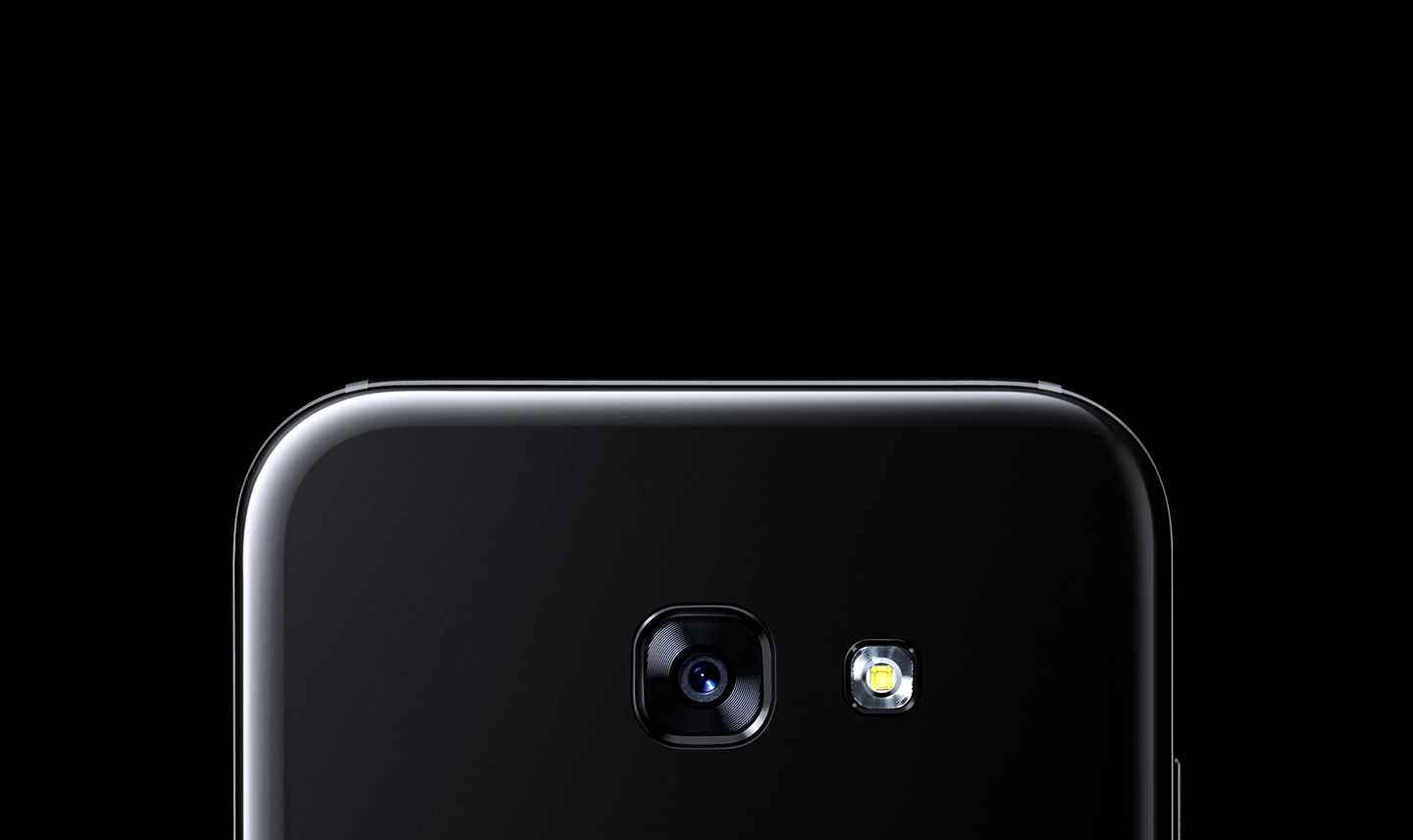

Design is a very controversial parameter and the device received its portion of criticism. Whatever they called him. Among the most popular epithets that the device received were such as 'soap' and 'remnant'.
My opinion on this matter usually receives no less criticism than the design of the phone itself, and that's why, in my opinion, the Galaxy S3 is one of the most successful and ergonomic devices on the market in terms of design. It lies very comfortably in the hand and is made taking into account the anatomical features of the human hand. Sloping rounded edges, bevel at the ends, allowing the device to sink into the palm of your hand. Among all the devices that we had a chance to use (and this is more than 50 models of phones from different manufacturers), only Moto X of the first generation was more convenient.

The power and volume buttons are plastic, located on opposite sides at the same height, which in my opinion is not very successful – often when the volume was pressed, the power button was pressed and vice versa.
Headphone jack on top, which was the standard at the time (except for iPhone 5). Polyphonic speaker at the top, to the right of the camera. When the device is in your pocket, the sound is very muffled.
For all its merits, the phone is very glossy! Because of this, it perfectly collects fingerprints from all its sides. However, it is just as easy to get rid of them with any cloth or napkin (and most often 'about the belly').
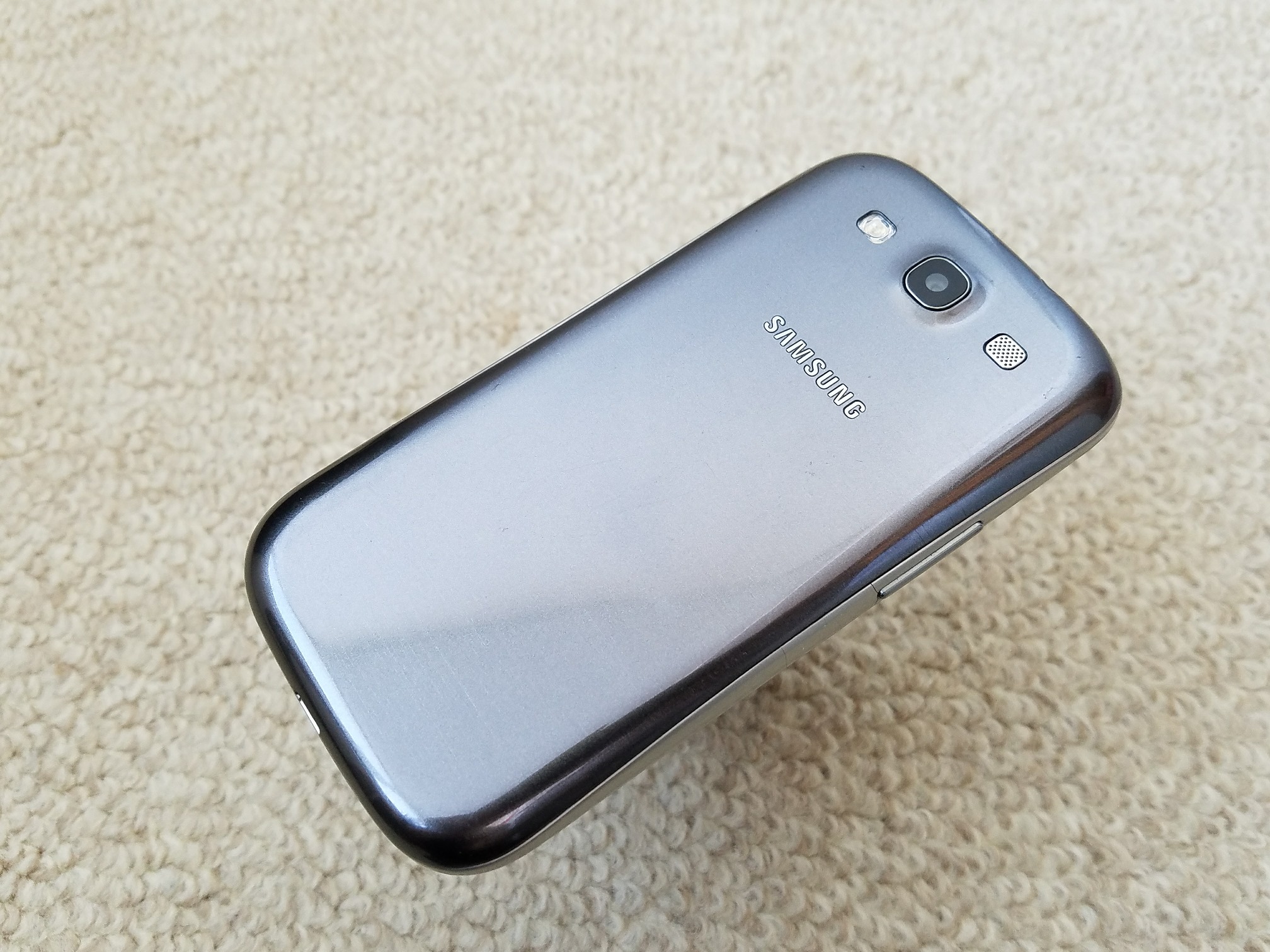
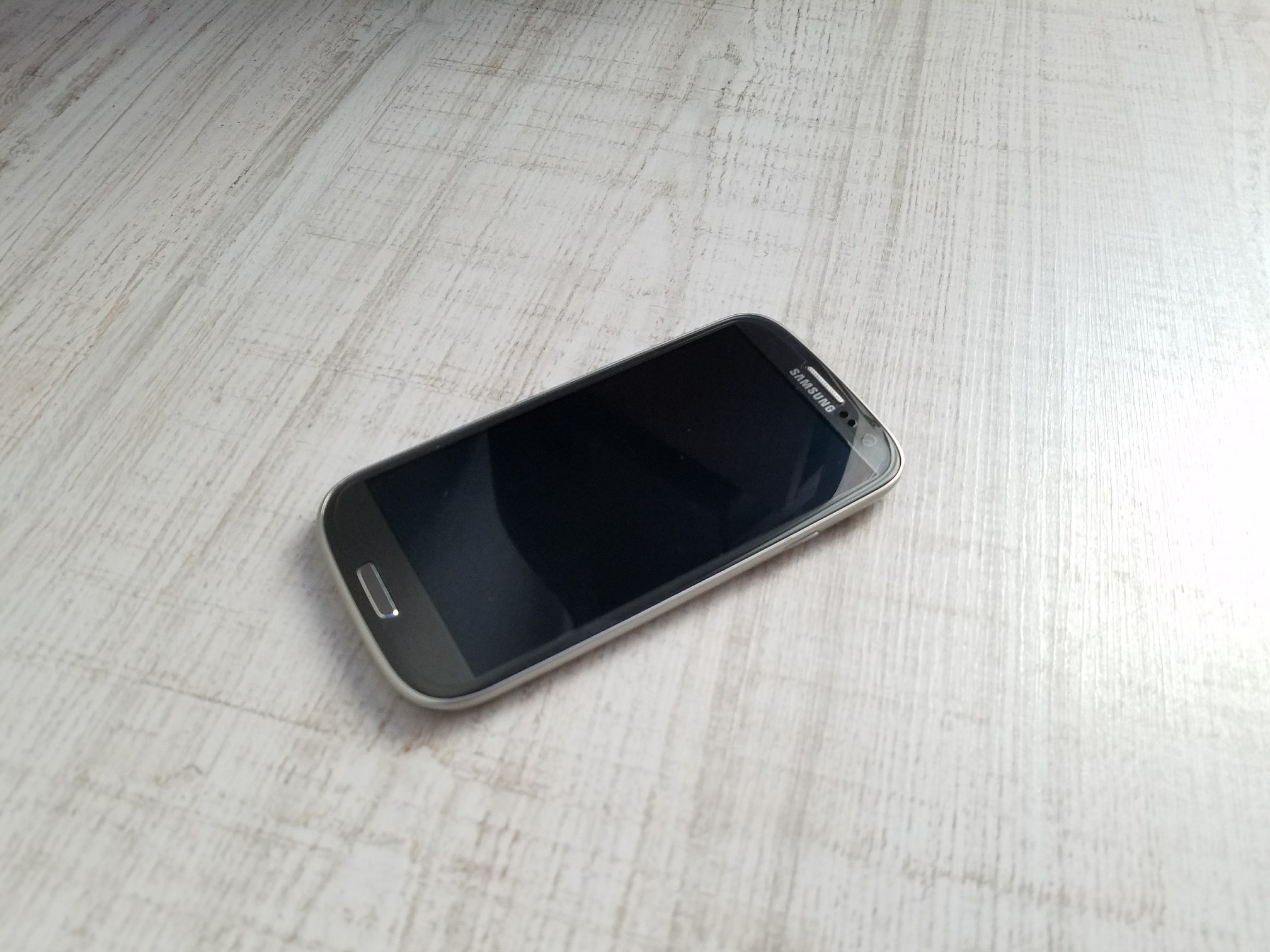
A few words about the camera design. The camera glass is easily scratched. as it sticks out. But the main problem with the camera and the whole device is the glossy edges. They instantly get chipped and lose their presentation. In the case of a camera, this is not a very big problem, since glass with a rim costs a penny and changes in a couple of movements.


The 'Home' button with a metal coating, which is very easily scratched during operation, but due to the design features it is almost impossible to replace it.
The phone is completely plastic, this is both an advantage and a disadvantage.
And the main disappointment is the plastic chrome frame of the body (like the camera glass) covered with a layer of varnish. When used without a protective case, it very quickly becomes covered with chips and scratches, exposing black plastic and making the device look untidy.
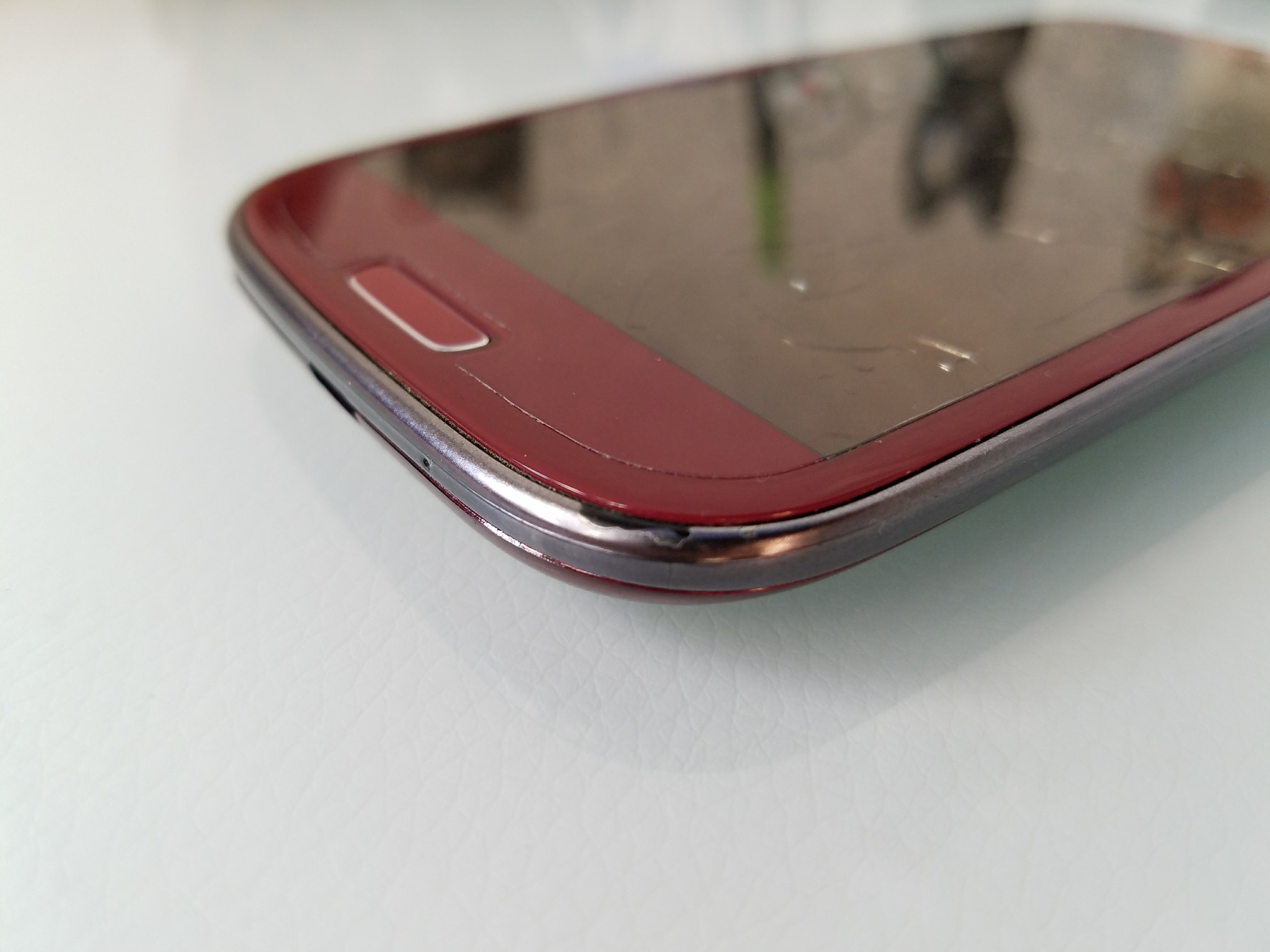
And yes, just like the button, the frame is very, very difficult to replace separately. Not every master will undertake such a replacement.
Among other things, cracks in this very frame of the case, which appear on the corners of the device and near the buttons, have become a mass problem of this model. At one time, authorized service centers recognized this as a problem and changed devices under warranty, but then this attraction of unprecedented generosity ended. Just keep this in mind – most likely some cracks will appear on the frame of the case. Alas, nothing can be done about it. The phenomenon is massive.


The back cover is also covered with a glossy varnish, which is rubbed off in places of contact with the surface. But the lid itself is quite strong and very flexible, so it is unlikely to break it by accident.
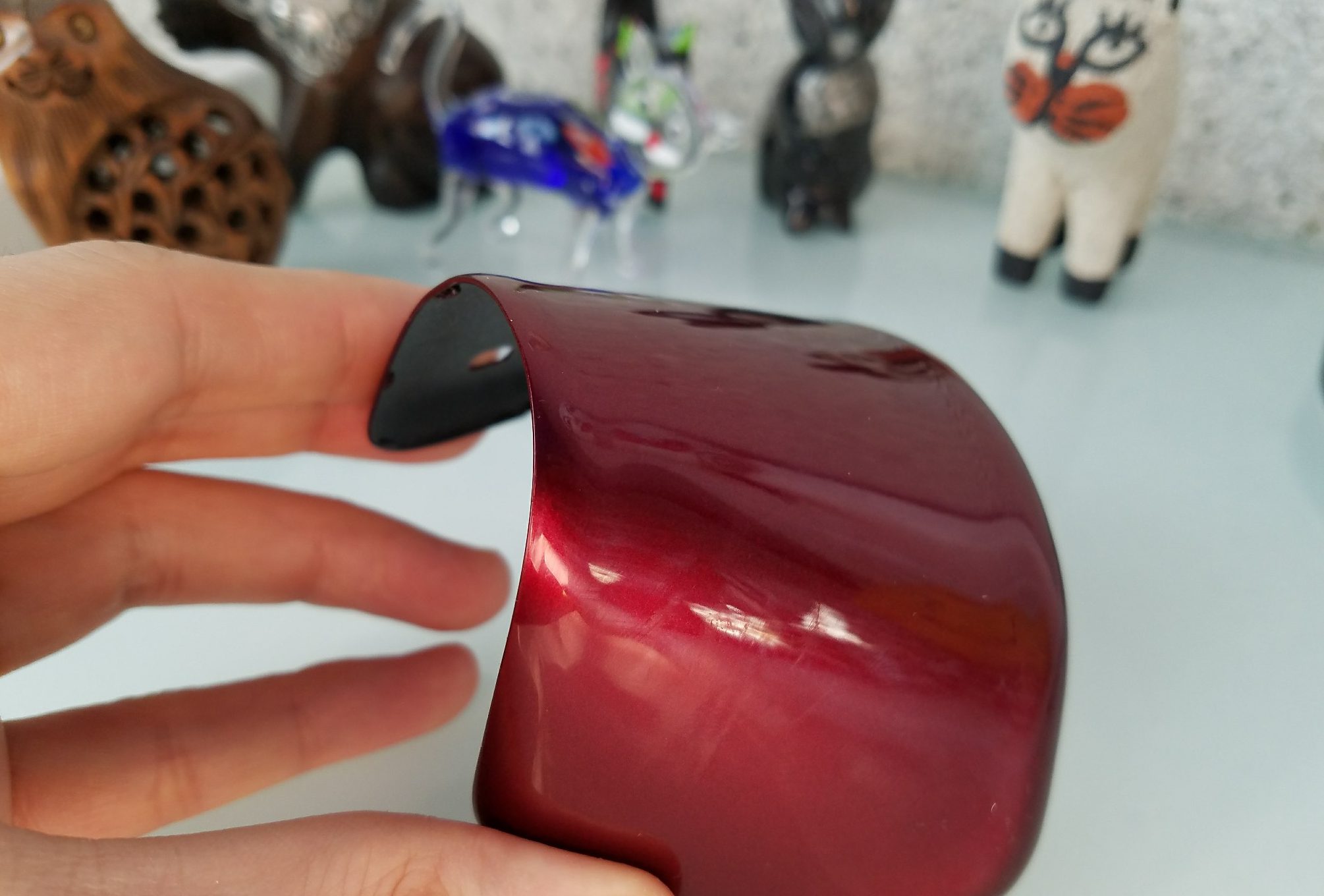
Don't do as I do. The consequence of such bullying may be the loss of some letters from the Samsung lettering, which are made of thin metal on the original cover and are glued to it (my sample shows that the letter 'G' wants to fly off), as well as cracks in the lacquer coating of the cover.

In the process of installation / removal, the cover clicks and pops quite loudly. There is no need to be afraid of this. This is a design feature. You won't break.
The main unit of the motherboard is located at the bottom, so at high loads, when the device gets very hot, it can cause discomfort to your hands. There are advantages to this – the upper part, which is near the face when talking, remains cold.

Note that the device was released in 2012, and even then there was an innovation that Samsung did not shout about at every step, but which after a couple of years became almost the most important indicator of premium quality from other manufacturers, which they trumpeted at every convenient case – 2.5D glass.
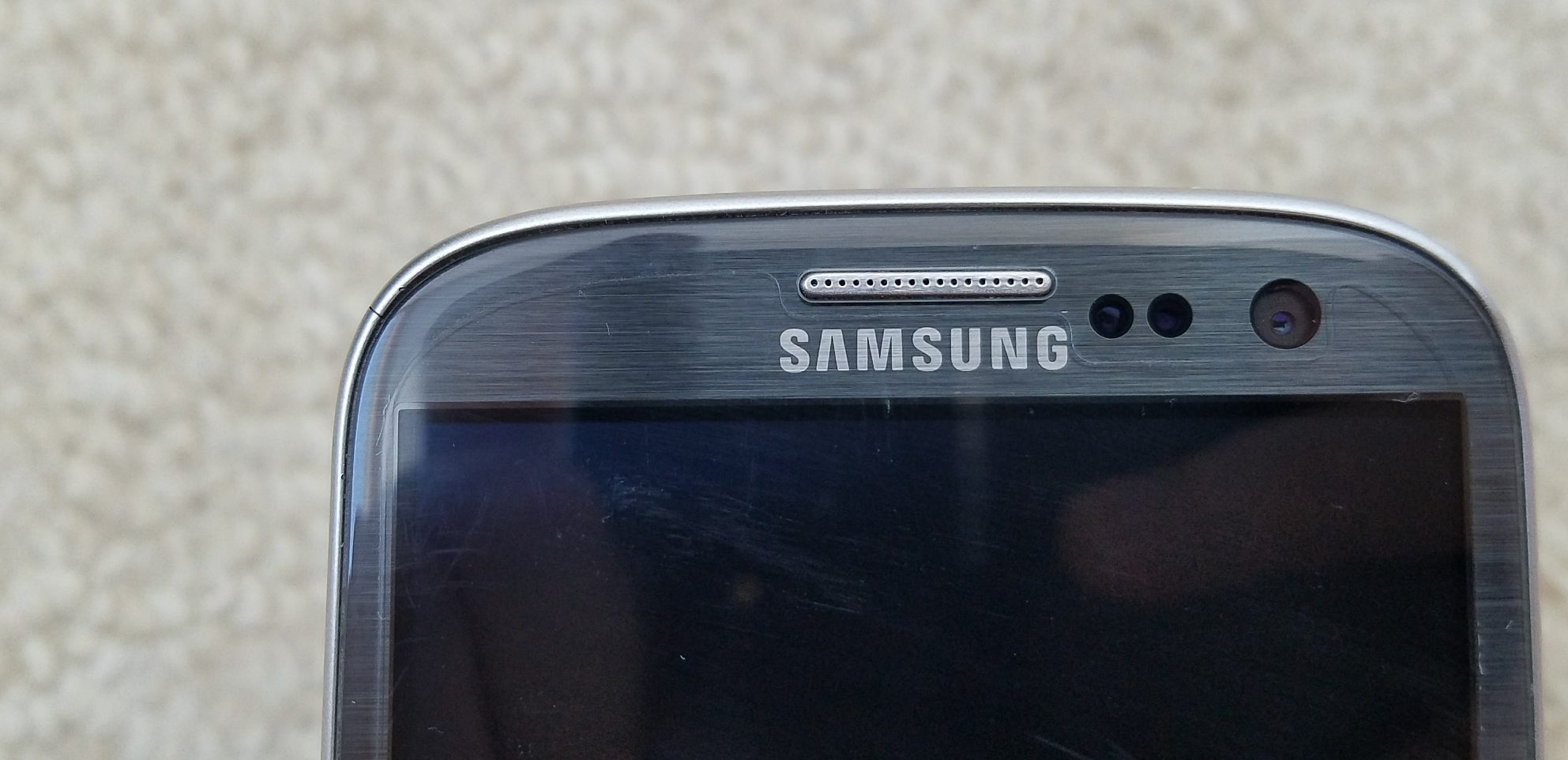
Accessories
During the existence of this model, a huge variety of accessories were released for it. Particularly popular were replaceable back covers, which, in addition to different colors, designs and patterns, were also produced from various materials, among which metal covers stand apart. It was an inexpensive opportunity to add some more premium and polish to the plastic device. The payment for this, absolutely naturally, was the deterioration in the quality of signal reception. The antennas of the device are located on the back surface, under the plastic, and the use of a metal cover strongly screens the signal, deteriorating the reception quality, keep this in mind.
Due to the design of the device, I recommend using such a simple accessory as a silicone case. This will protect the edges of the device from chipping.
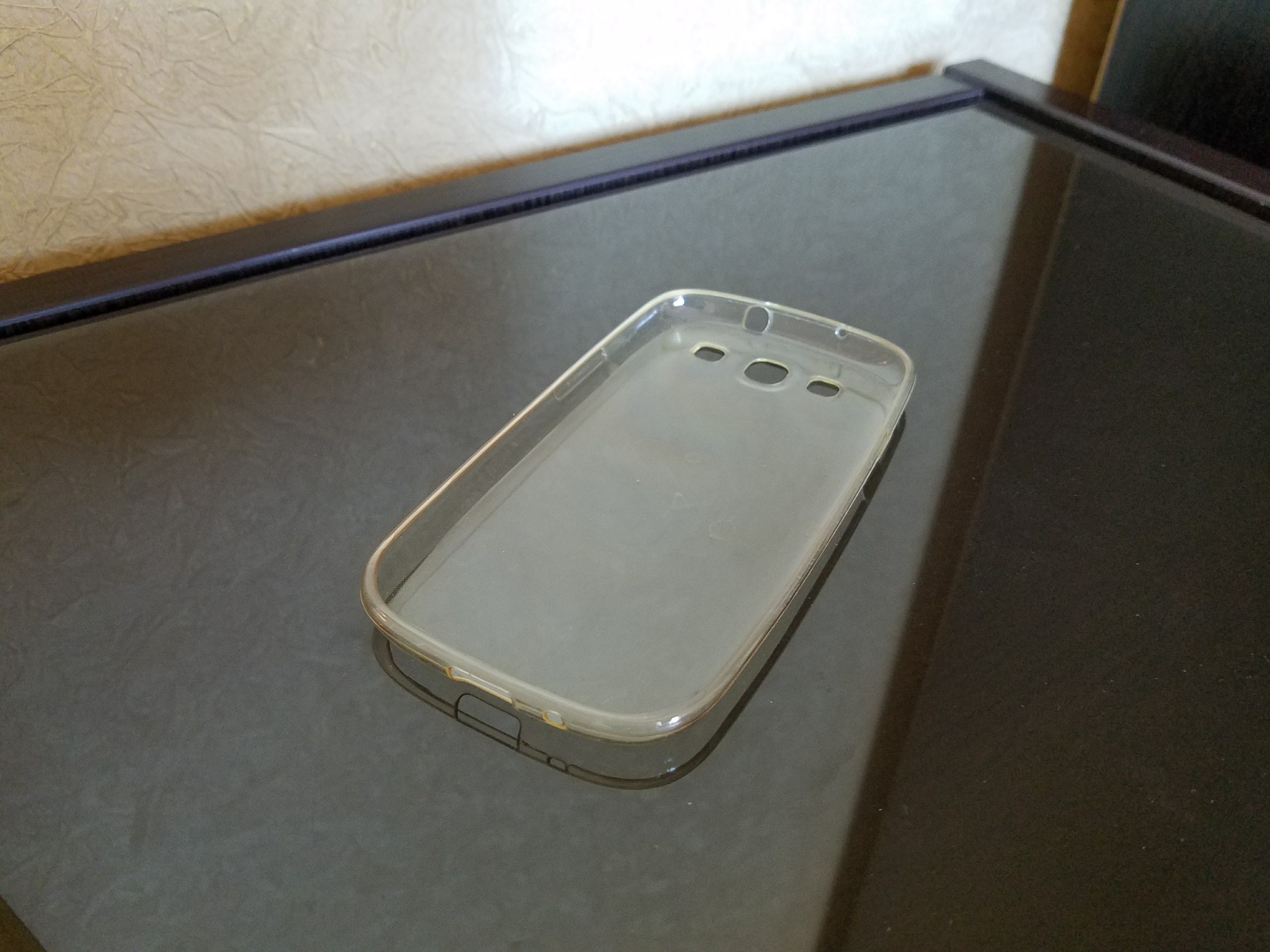
Battery
Its volume is small. By today's standards, it is generally small. In total, 2100mAh. This is enough for an average of 3.5 hours of the screen. Over time, the battery degrades and sooner or later it will need to be replaced. Keep in mind that this model, like the next one, has an NFC module built into the battery (there is an inscription under the name Samsung), and if you replace it with a non-original one, the phone will lose this function.

Maintainability
Perhaps one of the most controversial parameters of the device. I want to start with the pros. The device is easy to disassemble, using a regular Philips screwdriver (Phillips). You just need to unscrew 10 screws under the cover, pry off the plastic frame and that's it.
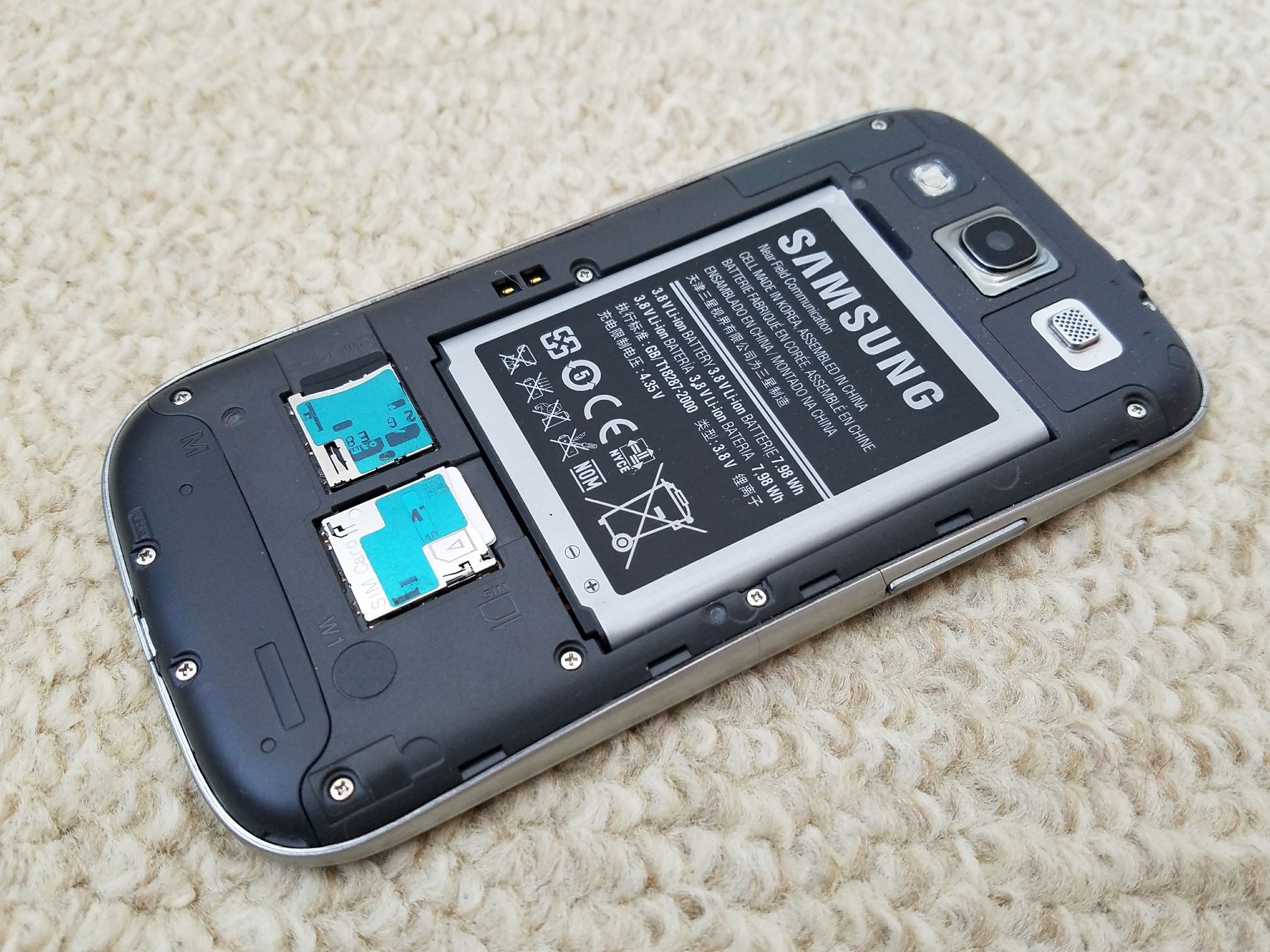
Thus, we will get access to the device's motherboard with all the elements.
The difficulty lies in the fact that the display module is very firmly glued to the frame of the case, and in fact is an integral part of it. Thus, replacing the display becomes quite expensive. The cost of a module with a frame at the moment is +/- 5000 rubles. which, you see, is a little expensive for a 2012 device.
The frame of the case is a metal bath, into which the display module is glued. The main problem is that it is glued in very thoroughly. Please note that the 'Home' button ribbon is visible at the bottom.
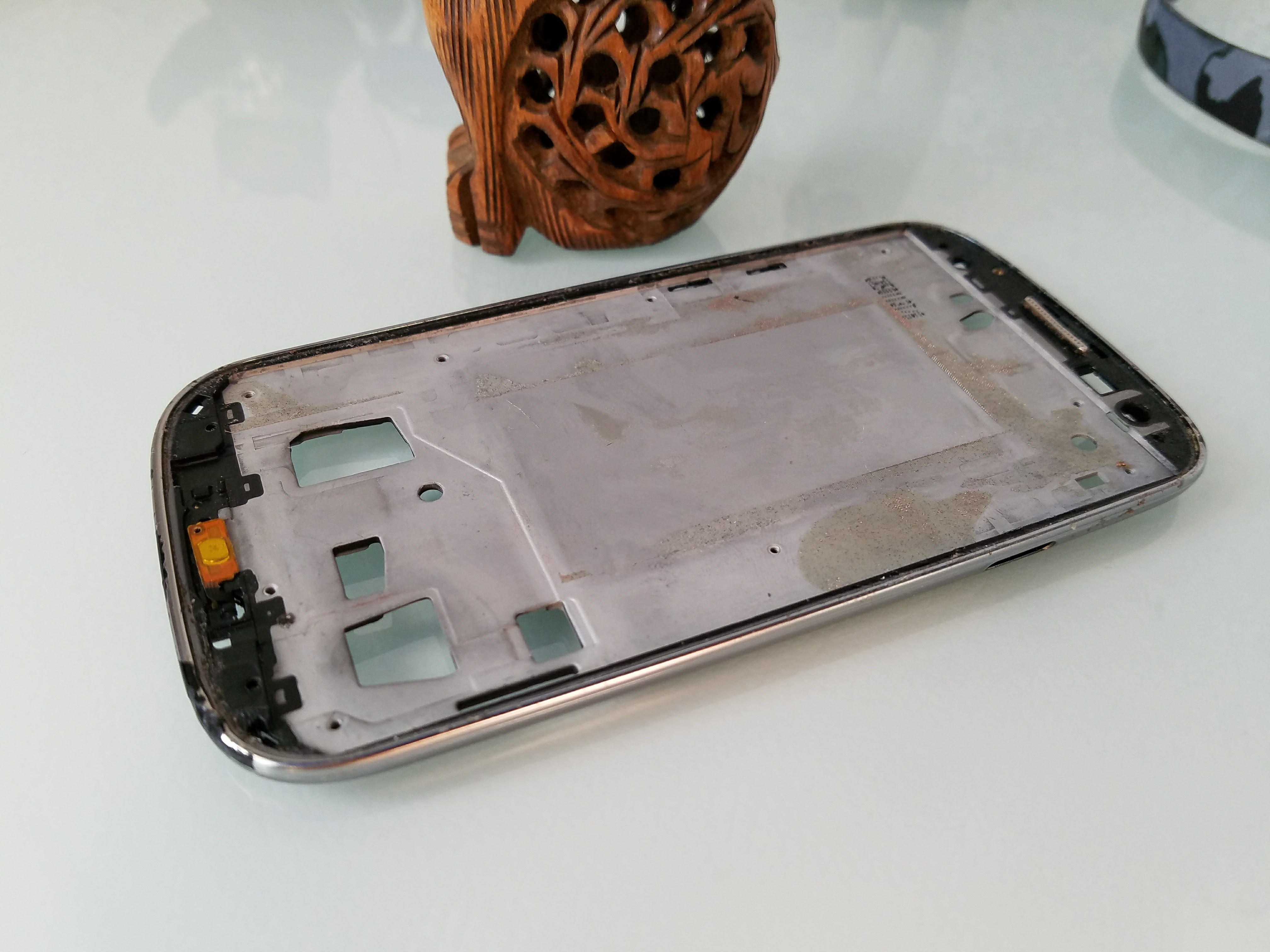
Otherwise, the repair is not difficult to master and is quite budgetary.
For example, if you break the SIM card slot, it will be very easy to replace it. To do this, you just need to unwind the device, unfasten the module glued to the motherboard, and install a new one in its place.
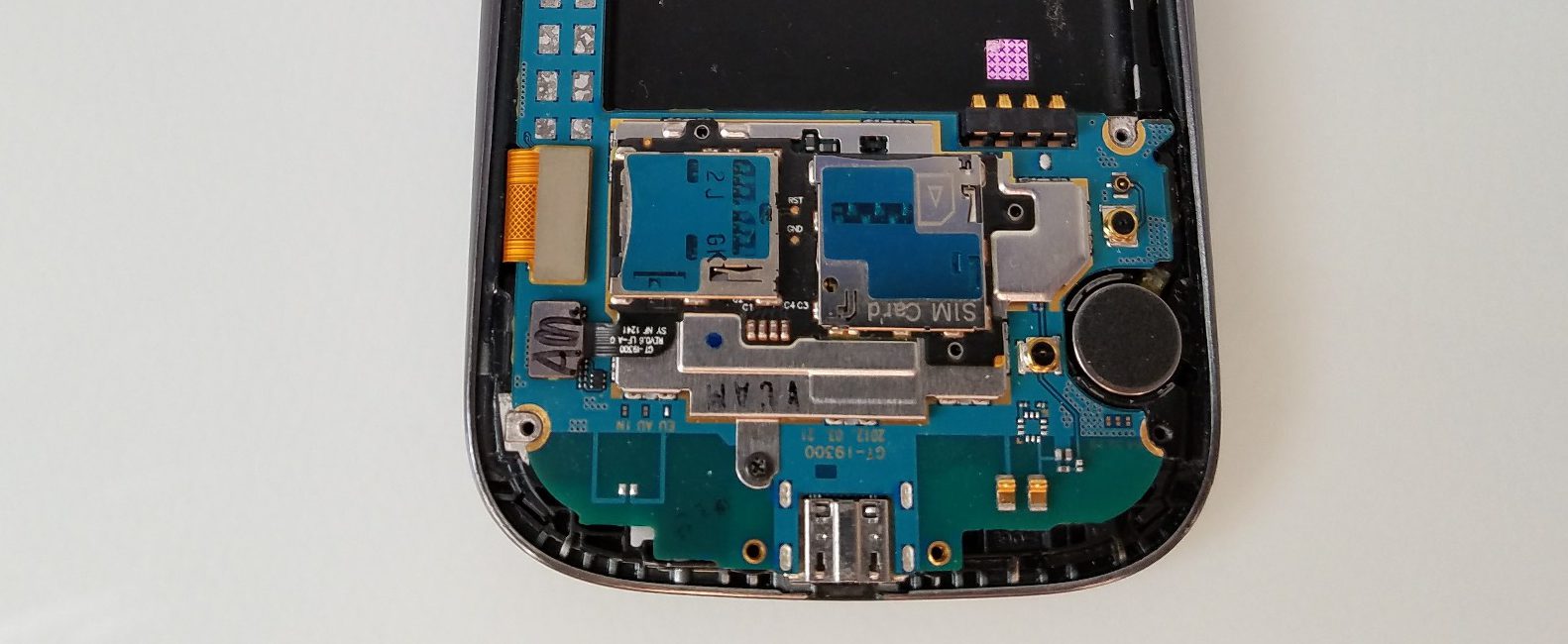
A common malfunction of many phones is the failure of the charging connector. Replacing the microUSB connector will require skills in working with a soldering dryer, since the connector is unsoldered on the motherboard. The task is not easy, and requires experience. It is better to give it to the master, most often it is not expensive.
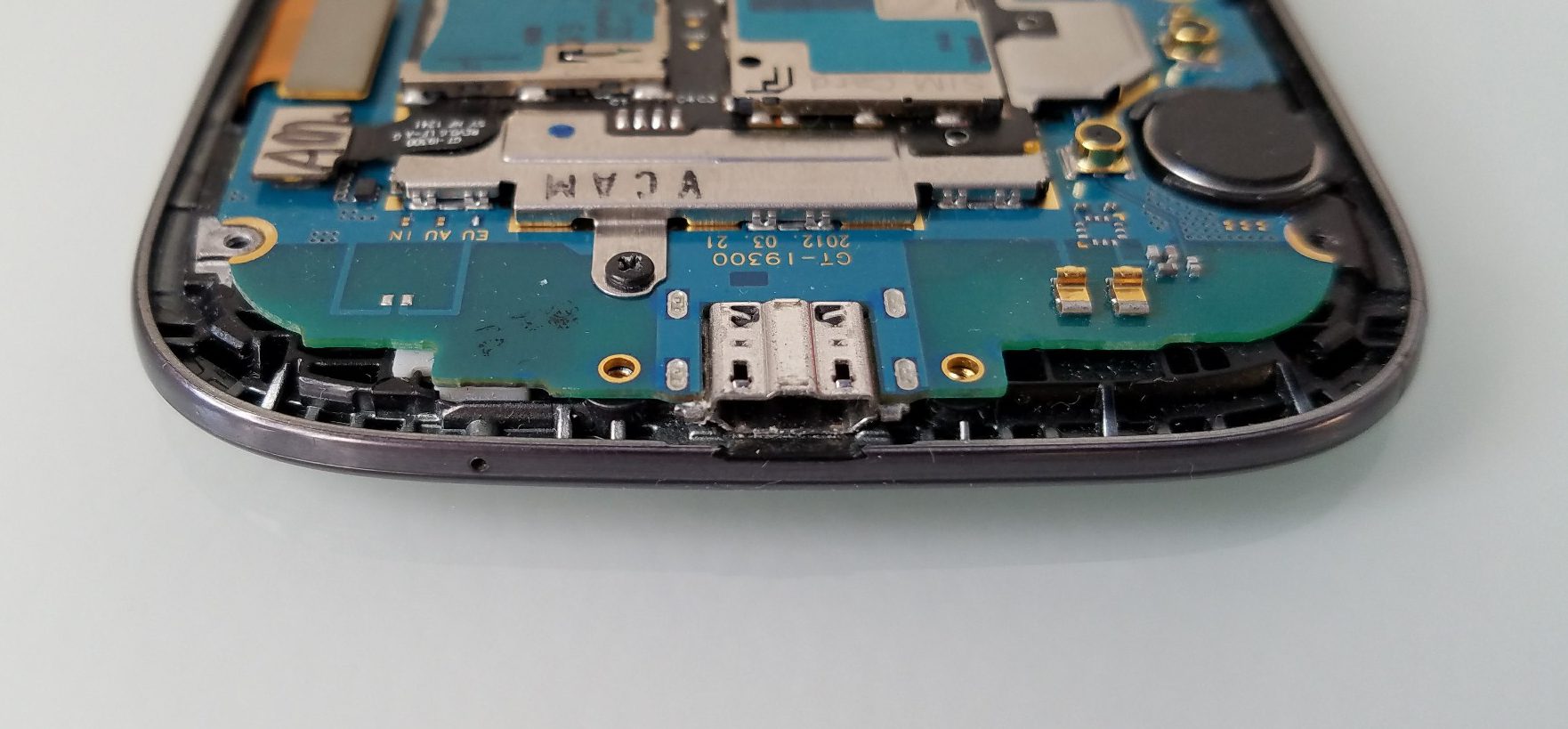
The rest of the elements, such as cameras, speaker, vibration motor, also change elementary.
The power and volume buttons have been scratched from time to time. It's not a problem. They are very easy to replace. It is enough to pry them with a needle and pull them out. And in their place, install new ones, ordered from an online store for a penny.
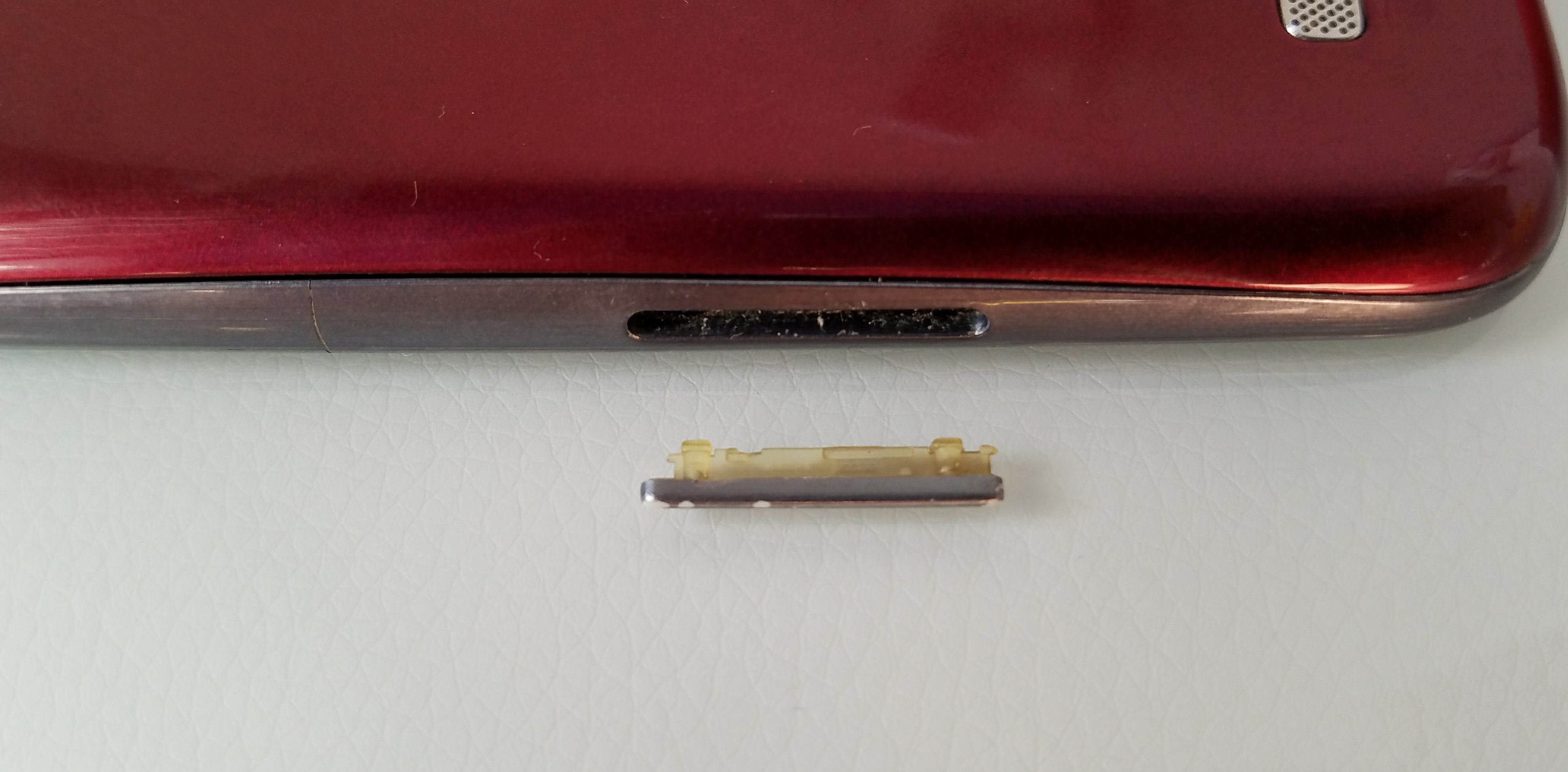
Again, the stumbling block is the replacement of the display module.
conclusions
At the moment, the device does not amaze with its power and technical characteristics, but despite this, it remains a very pleasant and inexpensive option for connoisseurs of ergonomic cases and small dimensions.
For relatively little money (especially in the secondary market), you will get average performance, which, in fact, is enough for almost everything.
And by the way, this model has better camera quality than the very popular now Xiaomi Redmi 3 Pro. If we compare these devices, we will see that at the same price on the side Xiaomi a display with a higher resolution (FHD versus HD), a faster processor, more RAM and a more capacious battery, everything is so. But the Chinese does not have such a solid, finished design and crazy ergonomics of the Samsung S3.
Is this device relevant now?
I think that it is, especially if you are not a fan of technology and you need a solid, reliable device with a very good camera.
P.S. This device is used by my mother, it completely suits her, and she does not want to part with it, even in exchange for more modern phones.
